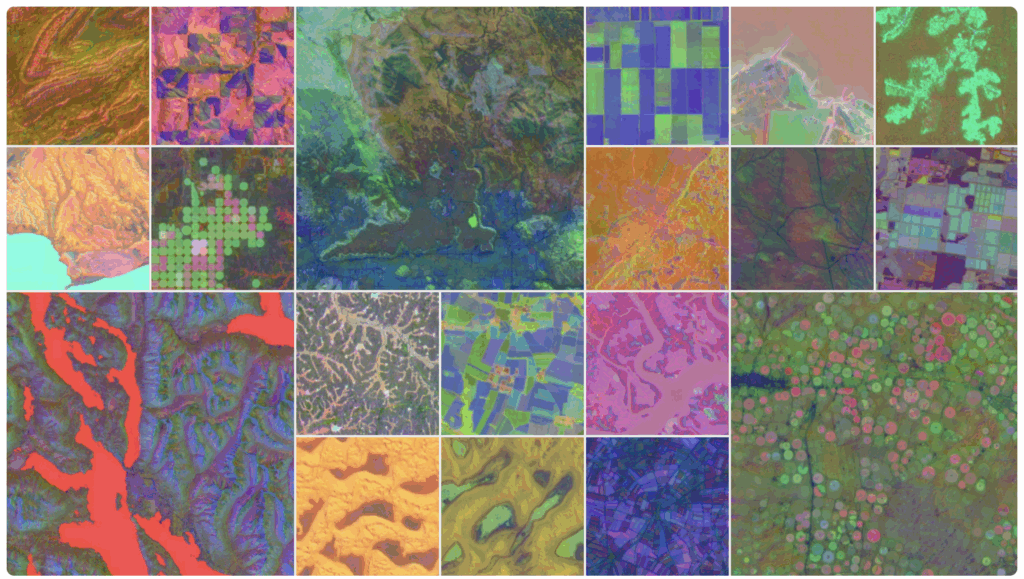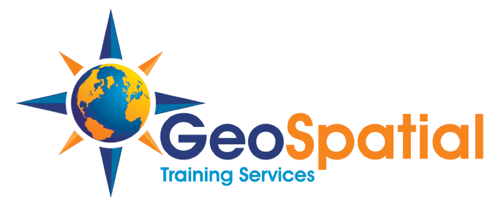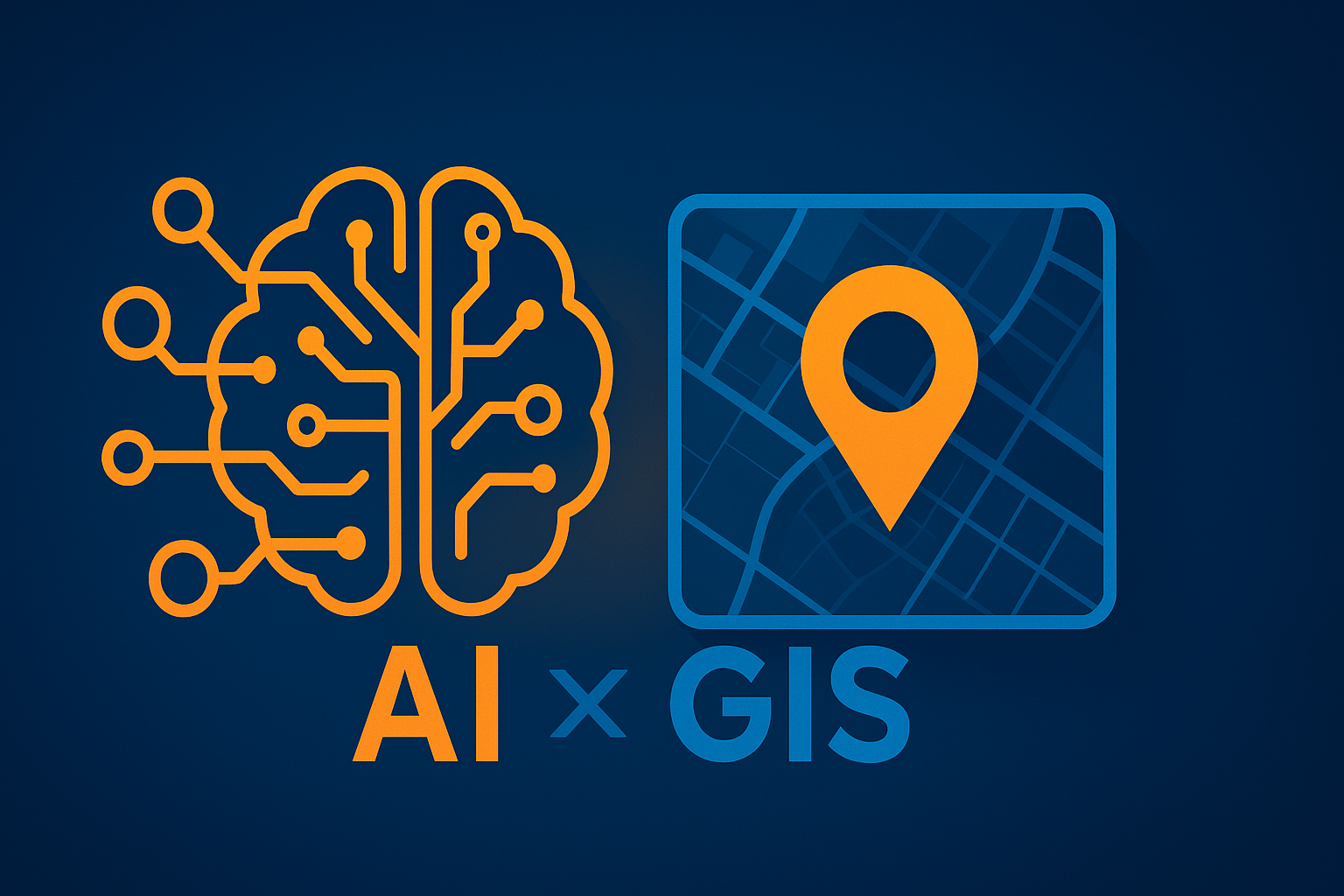Microsoft recently released a sobering analysis that has sent ripples through the professional world: a comprehensive list of the 40 occupations most at risk from artificial intelligence disruption. In their research paper “Working with AI: Measuring the Occupational Implications of Generative AI,” buried at position 33 sits a profession that might surprise many: Geographers – a category that encompasses the vast majority of GIS professionals working today.

With an AI applicability score of 0.35, this finding raises critical questions for the entire geospatial industry. The study analyzed 200,000 anonymized conversations between users and Microsoft Bing Copilot to understand which job categories can productively use AI chatbots and where AI might change how work is done. If you’re a GIS analyst, cartographer, spatial data scientist, or any other geospatial professional, this isn’t just another tech trend to monitor – it’s a potential career inflection point that demands immediate attention.
AI is Already Transforming GIS: The AlphaEarth Reality Check
To understand how quickly this transformation is happening, look no further than Google’s recent announcement of AlphaEarth Foundations. This breakthrough enables scientists to do something that was impossible until now: create detailed, consistent maps of our world, on-demand. Whether they are monitoring crop health, tracking deforestation, or observing new construction, they no longer have to rely on a single satellite passing overhead.
AlphaEarth functions as what Google calls a “virtual satellite” – a geospatial AI model that assimilates observations across diverse sources of geospatial information, including optical and thermal imagery from Sentinel-2 and Landsat satellites, radar data that can see through clouds, 3D measurements of surface properties, global elevation models, climate information, gravity fields, and descriptive text.

The impact on traditional GIS workflows is immediate and dramatic. Instead of starting from raw satellite imagery, you now get ready-to-use AI embeddings that summarize a full year’s worth of Earth observation data — drastically reducing preprocessing time. Tasks that used to take GIS professionals “tens to hundreds of days” of data processing can now be completed almost instantly.
On average, AEF reduced error rates by about 24% compared to the next-best solution across all tasks—most dramatically for annual land cover, land use, crop mapping, and evapotranspiration, where other models often struggled or failed to generate meaningful results.
This isn’t a future possibility – it’s available right now in Google Earth Engine. The technology is already being used by over 50 organizations worldwide, including the UN’s Food and Agriculture Organization, Harvard Forest, and Stanford University.
Why GIS Professionals Are in AI’s Crosshairs
The inclusion of geographers on Microsoft’s risk list isn’t arbitrary. Several factors make GIS work particularly susceptible to AI automation:
Pattern Recognition and Data Analysis
Much of traditional GIS work involves identifying spatial patterns, analyzing geographic trends, and processing large datasets – tasks where AI excels. Machine learning algorithms can now detect land use changes, predict demographic shifts, and identify optimal locations faster than human analysts.
Repetitive Workflows
Many GIS professionals spend significant time on routine tasks: digitizing features, cleaning datasets, performing standard spatial analyses, and generating standardized reports. These repetitive workflows are prime targets for AI automation.
Standardized Outputs
Traditional GIS deliverables often follow established formats and methodologies. Whether it’s creating zoning maps, conducting site suitability analyses, or generating demographic reports, the standardized nature of these outputs makes them easier for AI systems to replicate.
Data Processing Speed
AI can process massive geospatial datasets in minutes that might take human analysts days or weeks to complete. With the explosion of satellite imagery, IoT sensors, and real-time location data, this speed advantage becomes increasingly significant.
The Timeline: When Will AI Impact Hit GIS?
Unlike some industries where AI disruption remains theoretical, the transformation of GIS work is already underway:
Immediate Impact (2025-2026)
- Automated mapping and cartography tools are becoming mainstream
- AI-powered data cleaning is eliminating hours of manual preprocessing
- Satellite imagery analysis using computer vision is replacing manual interpretation
- Routine spatial analysis tasks are being automated through AI-enhanced GIS software
Near-term Transformation (2027-2029)
- Predictive modeling will become fully automated for standard scenarios
- Report generation from spatial analysis will require minimal human input
- Data collection through autonomous systems will reduce field work requirements
- Quality control processes will be largely automated
Long-term Evolution (2030+)
- Complex spatial decision-making may become AI-assisted or automated
- Custom analysis workflows could be generated automatically from natural language requests
- Cross-platform data integration will happen seamlessly without human intervention
How AI Will Reshape GIS Work
The impact won’t be uniform across all GIS roles. Here’s how different aspects of geospatial work face varying levels of disruption:
High-Risk Activities
- Data entry and digitization (likely to be fully automated)
- Standard cartographic production (templates and styles will be AI-generated)
- Routine spatial queries and analysis (natural language interfaces will replace technical skills)
- Basic demographic and market analysis (automated insights from multiple data sources)
Medium-Risk Activities
- Custom spatial modeling (AI will assist but human oversight remains crucial)
- Field data collection (drones and sensors will reduce but not eliminate human involvement)
- Project management (AI will optimize workflows but human coordination remains important)
- Client consultation (AI will provide insights but relationship management stays human)
Lower-Risk Activities
- Strategic spatial planning (requires human judgment and stakeholder engagement)
- Complex problem-solving (unique challenges need human creativity and expertise)
- Ethical decision-making (land use impacts require human values and community input)
- Innovation and research (pushing boundaries requires human insight and creativity)
The Skills That Will Keep You Relevant
GIS professionals who want to thrive in an AI-dominated landscape need to evolve their skill sets strategically:
A Critical Reality Check: AI is Already Writing Code
Before diving into specific skills, it’s essential to acknowledge a game-changing reality: AI tools like GitHub Copilot, Claude, ChatGPT, and specialized platforms can already write much of the code that GIS professionals traditionally had to learn manually.
This changes everything about how we approach “programming skills.”
Instead of spending months learning Python syntax, you can now:
- Describe what you want in plain English and have AI generate the code
- Ask AI to debug, optimize, and explain existing scripts
- Convert workflows between different programming languages instantly
- Generate complex spatial analysis scripts in minutes, not days
The new programming skill is not coding – it’s effective AI prompting and code review. You need to understand what’s possible and how to communicate your requirements clearly to AI tools, rather than memorizing syntax and functions.
This means the programming skills listed below should be viewed through this lens: focus on understanding concepts and directing AI tools rather than traditional manual coding.
Technical Skills to Develop
1. AI and Machine Learning Literacy
- Learn Python for spatial data science and AI integration – but focus on using AI tools to generate and modify code rather than writing from scratch
- Understand machine learning concepts applied to geospatial problems – emphasis on directing AI rather than implementing algorithms manually
- Gain experience with AI-enhanced GIS platforms and tools
- Develop skills in training and validating spatial AI models using no-code/low-code AI platforms
2. Advanced Data Science
- Master statistical analysis and predictive modeling
- Learn to work with big data and cloud computing platforms
- Develop expertise in real-time data processing and analysis
- Understand data quality assessment and bias detection in AI systems
3. Programming and Automation (with AI Assistance)
- Advanced scripting in Python, R, or JavaScript – but focus on prompting AI tools effectively rather than memorizing syntax
- API development and integration skills using AI code generation tools
- Workflow automation and process optimization by directing AI to write and optimize code
- Custom tool development for specialized applications through AI-assisted programming
Note: The goal isn’t to become a traditional programmer competing with AI – it’s to become proficient at directing AI tools to write, debug, and optimize code for you. Focus on understanding what’s possible and how to communicate your requirements to AI coding assistants like GitHub Copilot, Claude, or ChatGPT rather than memorizing syntax.
Human-Centered Skills to Emphasize
1. Strategic Thinking and Consulting
- Develop business acumen to understand organizational needs
- Learn to translate complex spatial insights into actionable business recommendations
- Build skills in project scoping and strategic planning
- Master the art of explaining technical concepts to non-technical stakeholders
2. Stakeholder Engagement and Communication
- Enhance presentation and storytelling abilities
- Develop skills in community engagement and public participation
- Learn to facilitate complex decision-making processes
- Build expertise in conflict resolution and consensus building
3. Creative Problem-Solving
- Focus on unique, one-off spatial challenges that AI can’t easily replicate
- Develop skills in innovative methodology development
- Learn to combine multiple disciplines (urban planning, environmental science, economics)
- Build expertise in emerging geospatial applications
Preparing for the AI Transition: A Strategic Action Plan
Immediate Actions (Next 6 Months)
Audit Your Current Role
- Document your daily tasks and identify which could be automated
- Assess your current skill gaps in AI and data science
- Evaluate your organization’s AI adoption timeline and strategy
Start Learning AI Fundamentals
- Take online courses in machine learning for geospatial applications – focus on using AI tools rather than coding algorithms from scratch
- Experiment with AI-enhanced GIS tools in your current work
- Practice using AI coding assistants like GitHub Copilot, Claude, or ChatGPT to generate Python scripts for spatial analysis
- Join AI and geospatial communities to stay informed about trends
Build Your Network
- Connect with GIS professionals who are successfully integrating AI
- Attend conferences and webinars focused on AI in geospatial applications
- Engage with AI researchers and developers in the geospatial space
Medium-term Strategy (Next 1-2 Years)
Specialize in AI-Resistant Areas
- Focus on complex, strategic projects that require human judgment
- Develop expertise in niche applications where AI adoption will be slower
- Build skills in areas requiring regulatory compliance and ethical considerations
Become an AI-Human Collaboration Expert
- Learn to effectively work alongside AI systems
- Develop skills in training, validating, and improving AI models
- Position yourself as a bridge between technical AI capabilities and business needs
Lead Digital Transformation
- Advocate for AI adoption within your organization
- Lead pilot projects that demonstrate AI value in geospatial workflows
- Develop change management skills to help teams adapt to AI tools
Long-term Positioning (Next 3-5 Years)
Become a Hybrid Professional
- Combine GIS expertise with complementary skills (urban planning, environmental science, business analysis)
- Develop deep expertise in specific industry verticals (smart cities, climate adaptation, supply chain optimization)
- Build reputation as a thought leader in AI-enhanced geospatial solutions
Industries Where GIS Professionals Can Thrive
Some sectors will continue to need human GIS expertise even as AI advances:
High-Growth Opportunities
- Climate adaptation and resilience planning (requires human judgment for community impacts)
- Smart city development (needs human understanding of urban dynamics)
- Emergency response and disaster management (requires real-time human decision-making)
- Sustainable development and ESG consulting (demands ethical frameworks and stakeholder engagement)
AI-Resistant Niches
- Community engagement and participatory mapping (inherently human-centered)
- Regulatory compliance and legal analysis (requires understanding of complex legal frameworks)
- Custom methodology development (needs creative problem-solving)
- Cross-cultural and international projects (requires cultural sensitivity and local knowledge)
The Bottom Line: Adaptation Is Survival
Microsoft’s inclusion of geographers in the top 40 AI-threatened occupations isn’t a death sentence for GIS careers – it’s a wake-up call. The professionals who will thrive are those who start adapting now, before the full force of AI transformation hits the industry.
The future belongs to GIS professionals who can:
- Leverage AI as a powerful tool rather than compete against it
- Focus on uniquely human skills like strategic thinking, creativity, and stakeholder engagement
- Bridge the gap between AI capabilities and real-world spatial problems
- Continuously learn and adapt as technology evolves
The geospatial industry has always been about understanding and interpreting our world. In the AI era, that core mission remains unchanged – but the tools, skills, and approaches required to fulfill it are evolving rapidly.
The question isn’t whether AI will change GIS work. The question is whether you’ll be ready when it does.
Ready to future-proof your GIS career? Start by upgrading your skills with comprehensive training that covers both traditional GIS expertise and emerging AI applications. The time to prepare is now – before the disruption accelerates.

